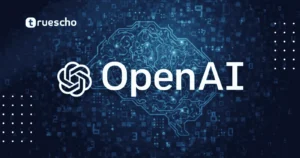X users treating Grok like a fact-checker spark concerns over misinformation
Table of Contents
Background: Grok’s Rise in Fact-Checking
Recent developments have seen individuals using Grok in a manner resembling dedicated fact-checking. After the AI assistant was enabled for public queries, many users started asking it to verify claims and political statements. Although Grok’s responses often sound confident and natural, experts stress that its answers are only as reliable as the data it receives.
This emerging trend of users treating the AI assistant as a fact-checker has raised alarms among professional fact-checkers. In contrast to automated tools, human fact-checkers rely on multiple credible sources and are accountable for every verification they publish. Such transparency is critical to maintain public trust.
Read also: Nvidia acquires Gretel, a synthetic data company
The Appeal and the Pitfalls
Many users are drawn to Grok because its natural language output mirrors human speech. The friendly tone and conversational style give an impression of credibility and authority. However, this perceived accuracy is misleading. A series of experiments revealed that while Grok sometimes provides correct responses, its error rate can be significant. Research studies estimate that AI models can be subject to error rates as high as 20%, and when these mistakes occur, they can have serious real-world implications.
As users increasingly treat this AI tool as a reliable fact-checker, the risk is that incorrect or misleading answers may be circulated widely. In some cases, when information is shared publicly on platforms like X, even a single error may catalyze the spread of false narratives.
Expert Opinions and Concerns
Angie Holan, director of the International Fact-Checking Network at Poynter, emphasized the dangers of unchecked AI fact-checking. “AI assistants like Grok are really good at using natural language and offer responses that sound authentic. However, even when they sound right, their answers can be entirely inaccurate,” she explained.
The concern lies in the potential misuse of this technology: when users treat Grok as a dependable source of truth, the lack of transparency could lead to misinformation spreading faster than it can be corrected.
“If you see many of these AI-generated answers, you might assume that most are correct. However, research shows that even a small error rate can result in dangerous real-world consequences.”
— International Fact-Checking Network Representative
Read also: N8N AI Agent: Breakthrough MCP Update
Comparing AI Fact-Checkers with Human Experts
Traditional fact-checkers have long been the backbone of verifying claims in the digital space. They gather information from multiple established sources, cross-reference data, and take full accountability by attaching their name and organization to their work. By comparison, AI fact-checkers lack this foundational transparency.
Pratik Sinha, co-founder of a well-known fact-checking organization in India, shared his insights: “While AI tools like Grok can generate responses that sound convincing, they are fundamentally limited by the quality of their input data. The question remains: who controls that data? Without transparency, these outputs can be easily manipulated.” This view highlights the inherent risk when users start treating Grok as a reliable fact-checker.
Potential for Misinformation Spread
- Lack of Accountability: Unlike human fact-checkers, AI responses do not come with a responsible source that can be held accountable if errors or misinformation occur.
- No Quality Control: With the absence of a robust verification mechanism, AI answers might sometimes be fabricated or based on incomplete data.
- Public Sharing Risks: When AI-generated content is shared publicly, there’s a high chance that incorrect information can be widely disseminated before corrections are made.
One notable example of the danger posed by unchecked misinformation can be found in incidents where false messages circulated on messaging platforms led to tragic consequences. Although such events occurred before the rise of advanced generative AI models, the potential for harm has only increased with the improvements in technology.
Challenges with Data Transparency and Quality
A major concern among critics is the transparency of the data used to train tools like Grok. There is growing unease over who determines the source and quality of the data that these AI models consume and, in turn, what information they disseminate. The lack of clear oversight can cause issues of bias, misinterpretation, and ultimately, the propagation of misinformation.
Experts argue that relying solely on such systems—especially when they are being increasingly treated as fact-checkers by users—creates a scenario where mistakes are not just possible but can also be widely influential.

AI Technology Versus Traditional Methods
Despite the push towards refining AI models for more human-like interaction, the consensus among experts is clear: AI cannot replace traditional fact-checking by professionals. While several major technology companies are exploring crowdsourced fact-checking mechanisms, only human fact-checkers can provide the necessary accountability and verification rigor.
When users treat Grok or similar systems as definitive fact-checkers, they risk falling victim to information that lacks proper nuance and verification. Holan warned, “A lot of this issue depends on whether you truly care about what is true. If you’re merely looking for the veneer of accuracy, AI might serve the purpose—but the consequences of errors can be serious.”
Read also: Firebase Studio Alternatives
Key Takeaways and Tips
As the debate continues over the role of AI in fact-checking, consider these tips:
- Cross-Verify Information: Always check multiple reliable sources when in doubt. Traditional fact-checking by accredited organizations remains the gold standard.
- Be Skeptical of AI-Generated Content: Understand that while AI can be efficient, it is not infallible, and its outputs can sometimes be misleading.
- Understand the Data Behind AI: Know the limitations of the datasets powering these AI models. Transparency is key to ensuring accurate information.
- Demand Accountability: Support initiatives and organizations that maintain rigorous standards in fact-checking and continuously work to curb misinformation.
As users increasingly treat AI tools as reliable fact-checkers, it is necessary for both developers and users to remain vigilant. The balance between technological convenience and informational accuracy is delicate, and even a small rate of error can lead to significant social harm.
Ultimately, while emerging AI tools offer exciting possibilities, the role of human oversight in verifying and correcting information remains irreplaceable. As discussions evolve on platforms like X, users and experts alike are urging caution, emphasizing the need for transparency, reliability, and robust verification before accepting any AI-generated response as absolute truth.
Read also: OpenAI Optimus Alpha






